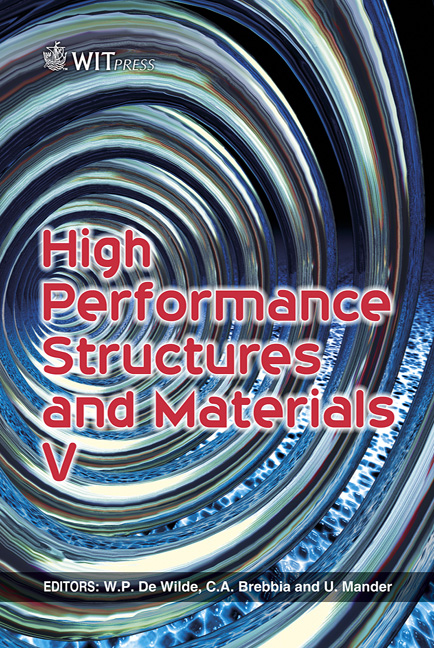Mechanical Behaviour Of Polymeric Foam Core At Various Orientation Angles
Price
Free (open access)
Transaction
Volume
112
Pages
10
Page Range
429 - 438
Published
2010
Size
633 kb
Paper DOI
10.2495/HPSM100401
Copyright
WIT Press
Author(s)
M. R. M. Rejab, M. S. M. Sani, M. M. Noor, K. Kadirgama, M. M. Rahman & A. Alias
Abstract
Polymeric foam is widely used as core materials in various applications such as cushioning, padding, insulating, structural use and buoyancy. This is because of its ability to provide high bending stiffness tied with lightweight in composite sandwich construction. The purpose of this paper is to present the behaviour of polyurethane foam, which is fabricated in various orientation angles. Five different orientation angles have been studied i.e. 0º, 30º, 45º, 60º and 90º. Three mechanical tests were performed under tension, compression and shear loads to investigate the polyurethane foam (PU) behaviour. Electron microscope was used to capture the microstructure of the specimens before and after the tests. Comparisons have been made between different orientation angles in fracture modes and mechanical properties. Deformation and failure occur during foam crushing are discussed according to experimental evidence. Since the main application of foam materials are for energy absorption, foam response under considerable compression has been studied intensively. At angle of 90º, it permits more localised failure with high-energy absorption and in contrary, 0º which posses the lowest of energy absorption. Energy absorption for PU foam material tends to increase when the orientation of angle is increased. Keywords: polyurethane foam, cell orientation angles, fracture mode. 1 Introduction Foam materials have a cellular structure with a three-dimensional array of cells and they are being used increasingly in engineering. Their microscopic cellular structure determines their superior performance as an energy absorbing materials
Keywords
polyurethane foam, cell orientation angles, fracture mode





